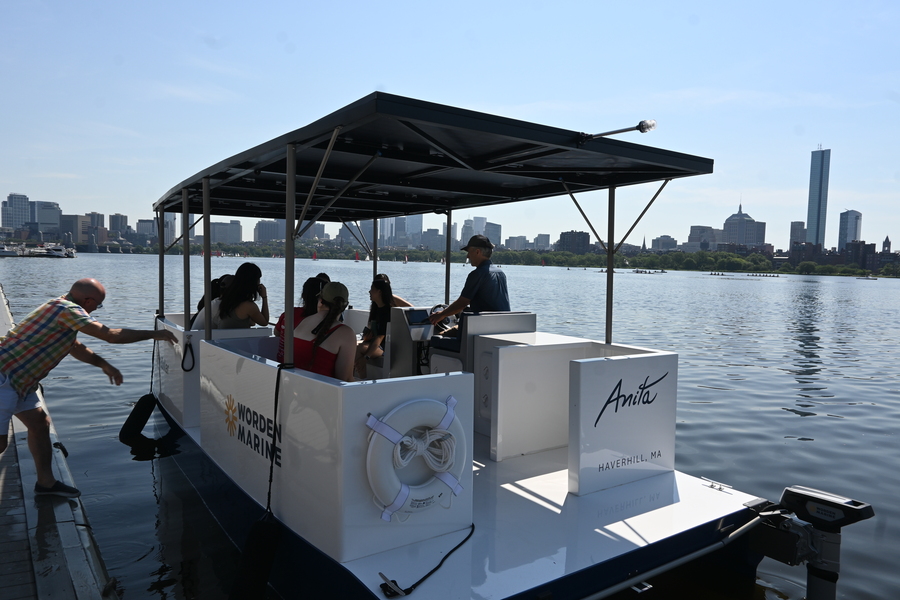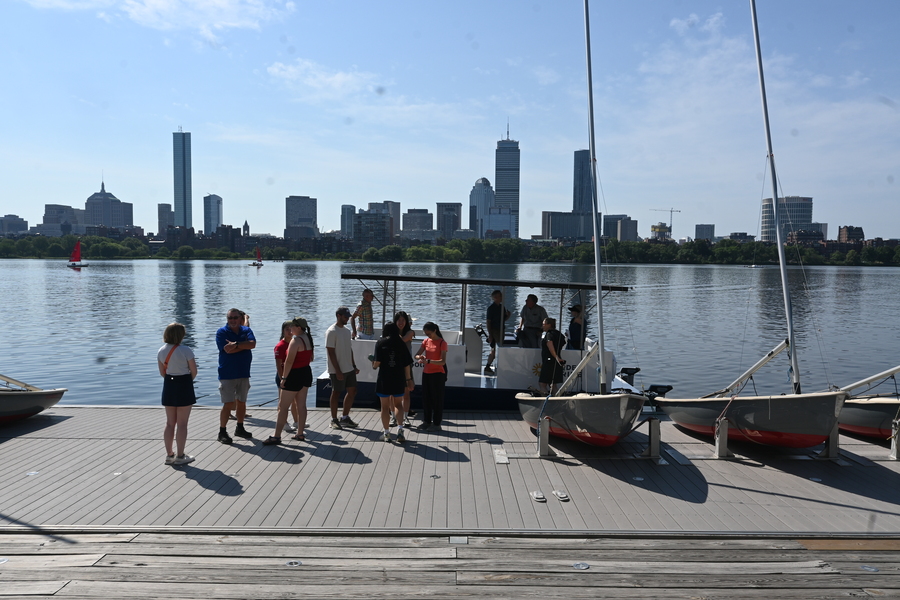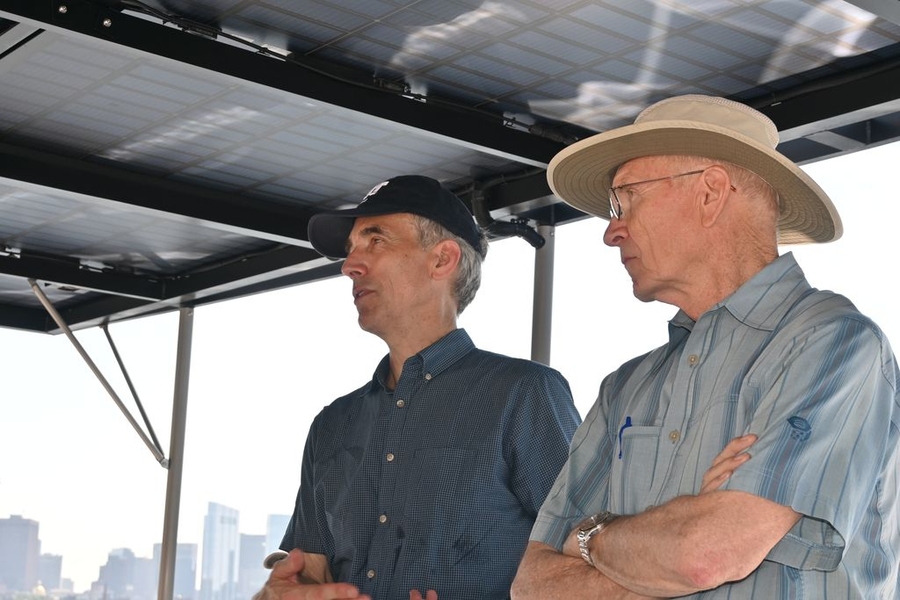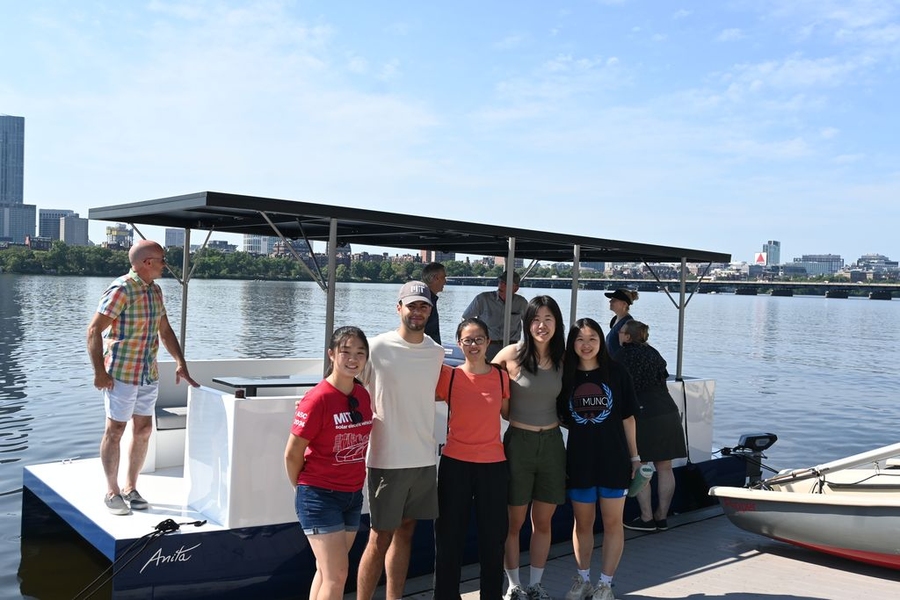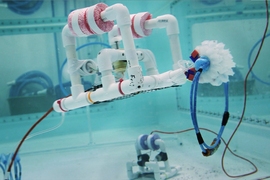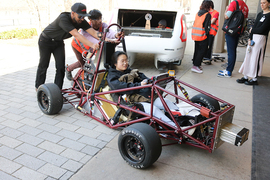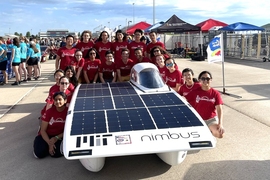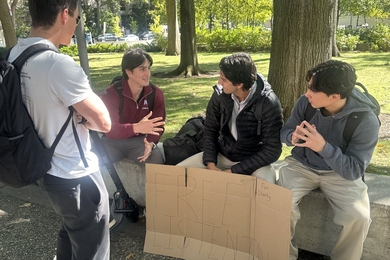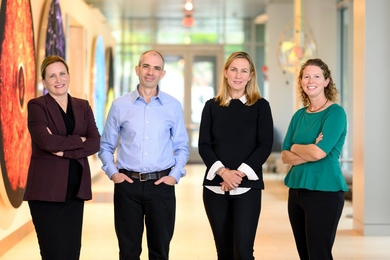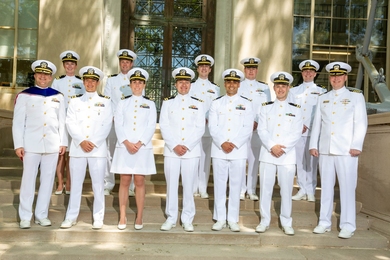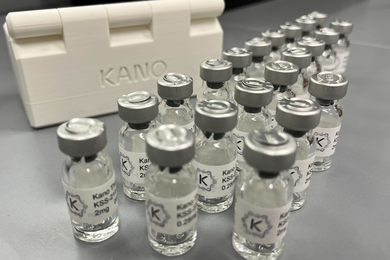The MIT Sailing Pavilion hosted an altogether different marine vessel recently: a prototype of a solar electric boat developed by James Worden ’89, the founder of the MIT Solar Electric Vehicle Team (SEVT). Worden visited the pavilion on a sizzling, sunny day in late July to offer students from the SEVT, the MIT Edgerton Center, MIT Sea Grant, and the broader community an inside look at the Anita, named for his late wife.
Worden’s fascination with solar power began at age 10, when he picked up a solar chip at a “hippy-like” conference in his hometown of Arlington, Massachusetts. “My eyes just lit up,” he says. He built his first solar electric vehicle in high school, fashioned out of cardboard and wood (taking first place at the 1984 Massachusetts Science Fair), and continued his journey at MIT, founding SEVT in 1986. It was through SEVT that he met his wife and lifelong business partner, Anita Rajan Worden ’90. Together, they founded two companies in the solar electric and hybrid vehicles space, and in 2022 launched a solar electric boat company.
On the Charles River, Worden took visitors for short rides on Anita, including a group of current SEVT students who peppered him with questions. The 20-foot pontoon boat, just 12 feet wide and 7 feet tall, is made of carbon fiber composites, single crystalline solar photovoltaic cells, and lithium iron phosphate battery cells. Ultimately, Worden envisions the prototype could have applications as mini-ferry boats and water taxis.
With warmth and humor, he drew parallels between the boat’s components and mechanics and those of the solar cars the students are building. “It’s fun! If you think about all the stuff you guys are doing, it’s all the same stuff,” he told them, “optimizing all the different systems and making them work.” He also explained the design considerations unique to boating applications, like refining the hull shape for efficiency and maneuverability in variable water and wind conditions, and the critical importance of protecting wiring and controls from open water and condensate.
“Seeing Anita in all its glory was super cool,” says Nicole Lin, vice captain of SEVT. “When I first saw it, I could immediately map the different parts of the solar car to its marine counterparts, which was astonishing to see how far I’ve come as an engineer with SEVT. James also explained the boat using solar car terms, as he drew on his experience with solar cars for his solar boats. It blew my mind to see the engineering we learned with SEVT in action.”
Over the years, the Wordens have been avid supporters of SEVT and the Edgerton Center, so the visit was, in part, a way to pay it forward to MIT. “There’s a lot of connections,” he says. He’s still awed by the fact that Harold “Doc” Edgerton, upon learning about his interest in building solar cars, carved out a lab space for him to use in Building 20 — as a first-year student. And a few years ago, as Worden became interested in marine vessels, he tapped Sea Grant Education Administrator Drew Bennett for a 90-minute whiteboard lecture, “MIT fire-hose style,” on hydrodynamics. “It was awesome!” he says.
